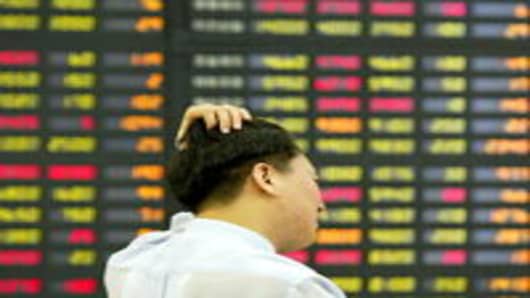South Korea's benchmark index, the Kospi has risen 7 percent so far this year, a much better performance than the 11 percent decline last year. But one analyst says the Kospi is looking vulnerable and could drop as much as 20 percent from current levels.
Shaun Cochran, Head of Research, Korea at CLSA told CNBC Asia's "Cash Flow" that the export-dependent market will fall this year unless global central banks provide more stimulus measures.
“In the absence of new stimulus measures from one of Korea’s major trading partners, the path of least resistance (for the Kospi) is down.”
The Kospi had been stuck in a 3 percent trading range between 1985 and 2050 since the start of February, but broke through downside resistance last week.
Cochran says the Kospi’s reliance on exporters to drive earnings growth is presenting a problem as the developed world struggles to boost demand.
”The developed world has so much debt, it’s having a hard time maintaining consumption…so every time the world questions that (debt level), the market comes off.”
The conundrum for markets, according to Cochran, is that they are fighting forces of deflation versus inflation.
Cochran thinks that any liquidity support from China, the U.S. or Europe will help prop up demand for Korea’s exports, and thus help boost market returns.
CLSA thinks that another round of quantitative easing from the U.S. Federal Reserve is inevitable, but Cochran doesn’t expect the central bank to take action until the S&P 500 falls to around 1150 to 1250 points. Taking this into account, Cochran adds that the bottom range for the Kospi would be 1550 to 1750 points, which represents as much as a 20 percent downside from current levels.
Cochran says investors should hold off from investing further in the equity market until more stimulus measures are announced.
In terms of sectors to invest in, Cochran thinks the insurance and steel sectors have strong fundamentals and are cheaply valued. He adds that any liquidity support in the U.S. or Europe will give these sectors a boost.


